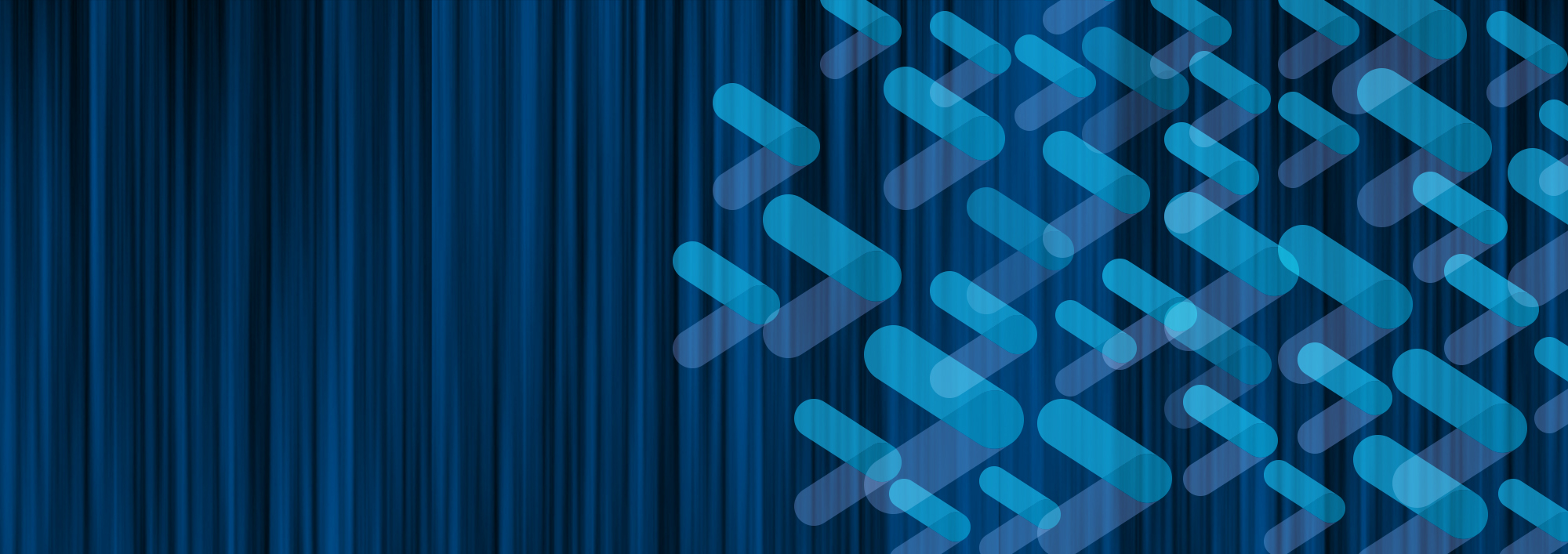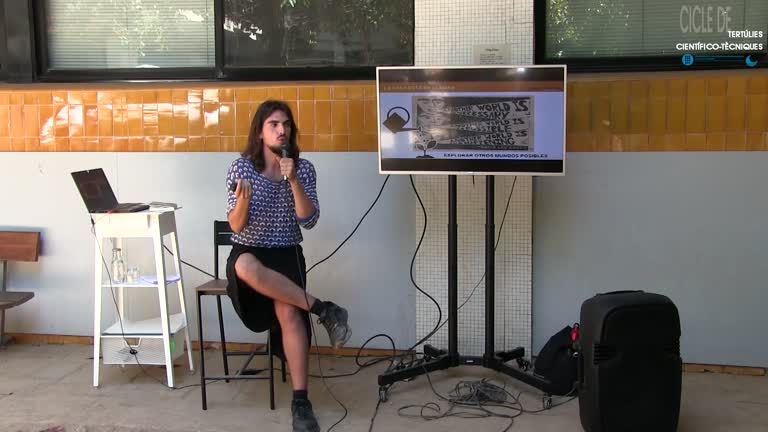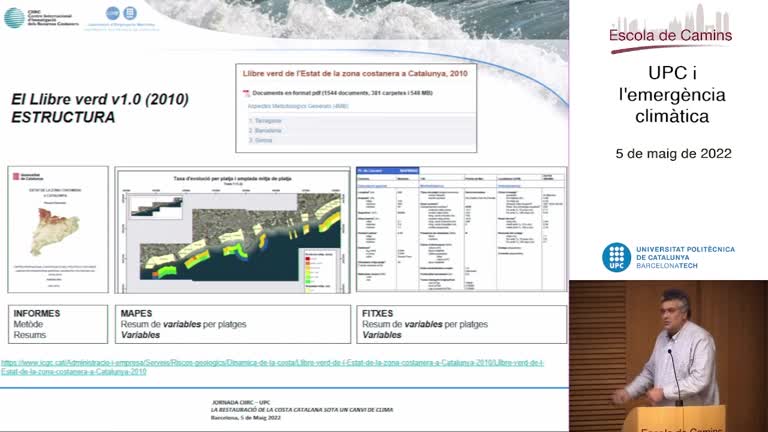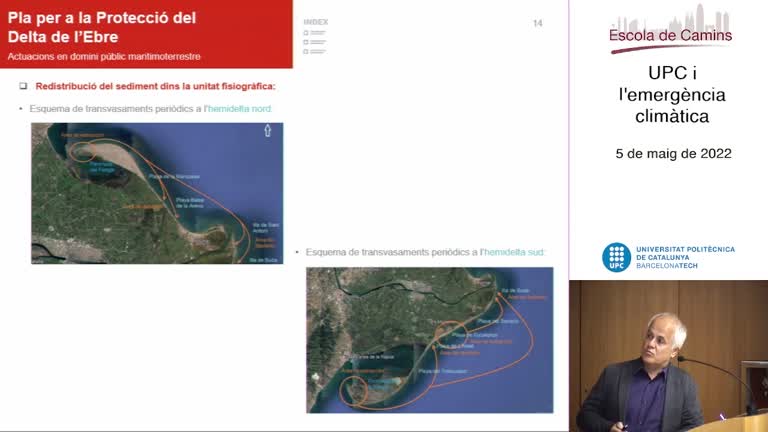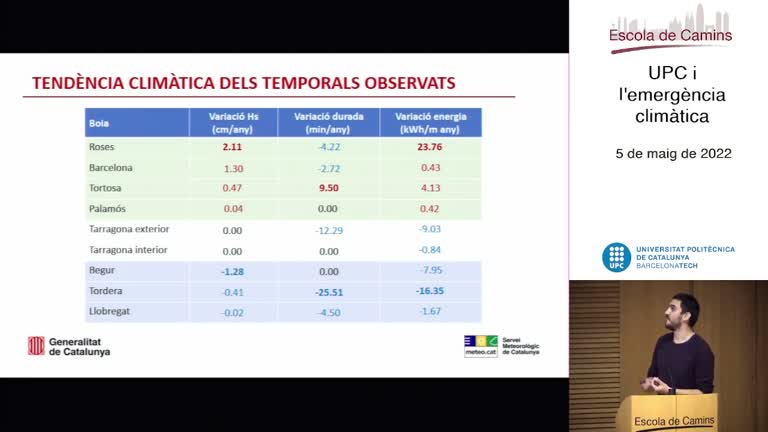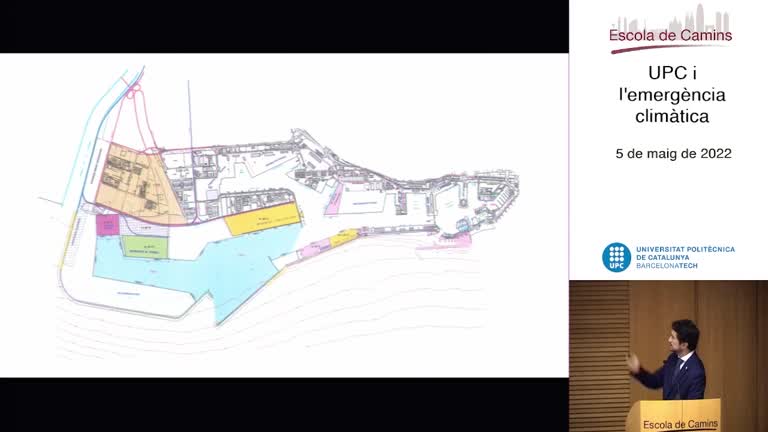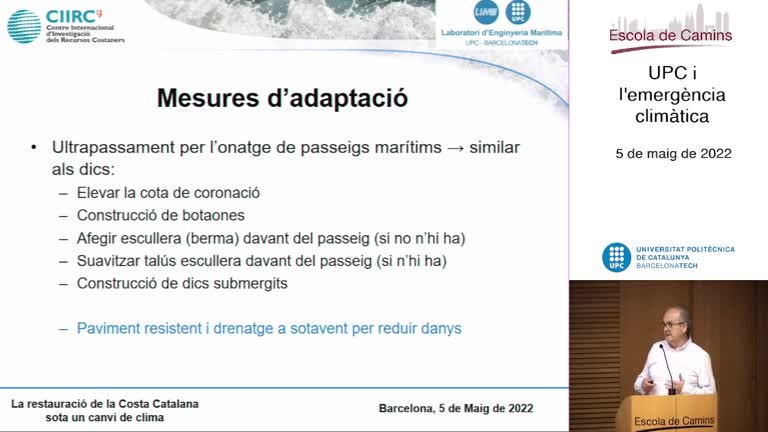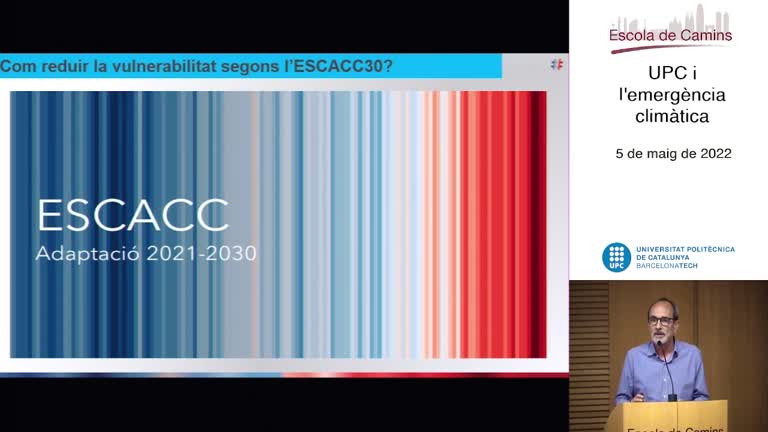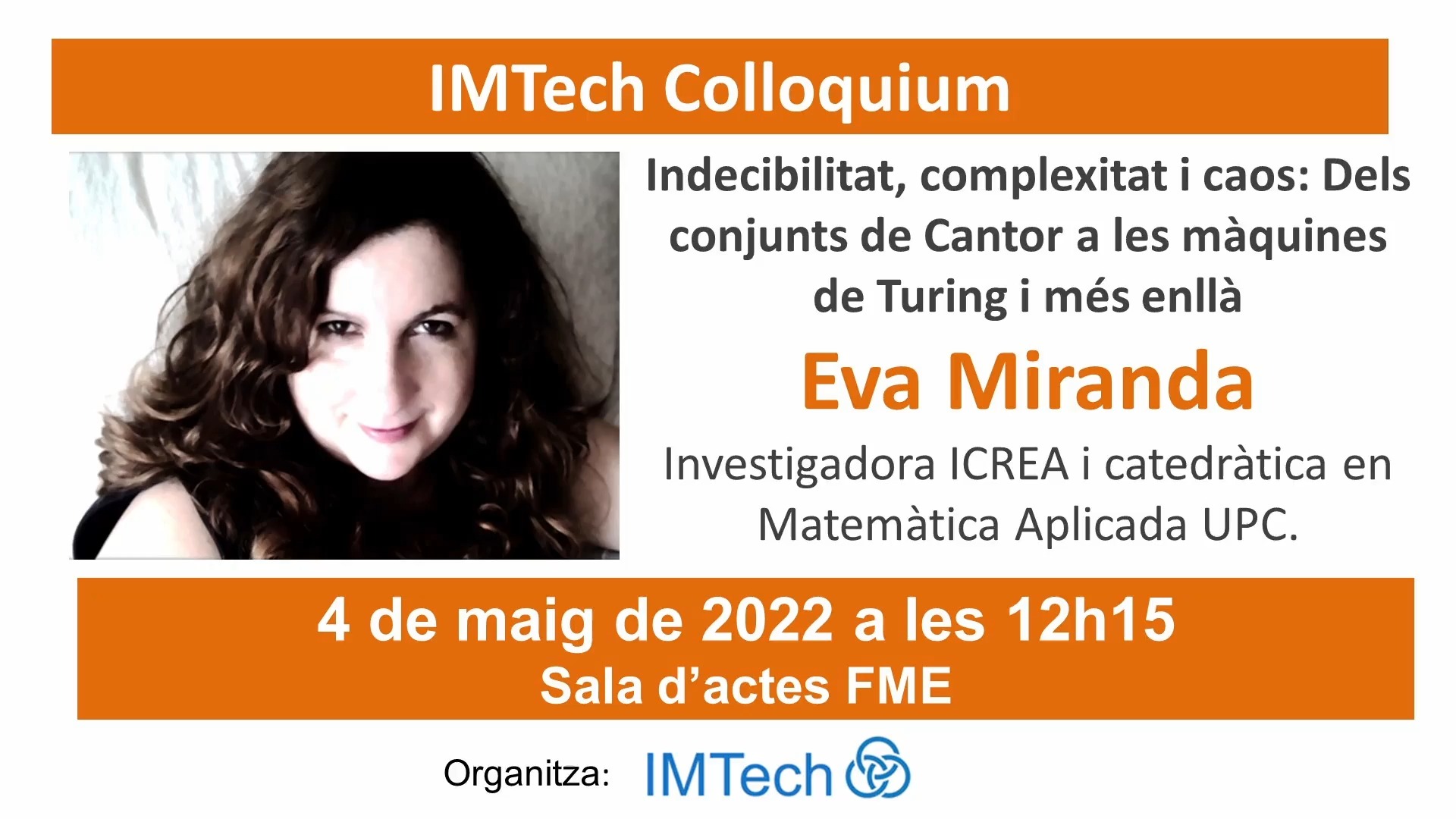Objectes multimèdia amb l’etiqueta: Actes, jornades i conferències
Resultats de la cerca
Jornada de pràctiques d'embarcament
Accés obert
11 de maig 2022
Sessió informativa sobre les pràctiques pels estudiants de pont i de màquines a càrrec del degà Agustí Martin, la cap d'estudis Montse Vela, el vicedegà Josep A. Moreno, i l'exestudiant David Garcia
Jornada (CIIRC-UPC): La restauració de la costa catalana sota un canvi de clima.
Accés obert
5 de maig 2022
El Centre Internacional d'Investigació dels Recursos Costaners (CIIRC-UPC) va organitzar la jornada "La restauració de la costa catalana sota un canvi de clima".
La jornada va comptar amb la participació d’experts i investigadors en l’àmbit marítim i costaner on es van tractar les conseqüències del canvi climàtic al litoral, l’ús de les infraestructures i les possibles actuacions per mitigar els seus efectes.
La jornada va comptar amb la participació d’experts i investigadors en l’àmbit marítim i costaner on es van tractar les conseqüències del canvi climàtic al litoral, l’ús de les infraestructures i les possibles actuacions per mitigar els seus efectes.
Restauració d’espais costaners. El cas de Prats d’Albinyana.
Accés obert
5 de maig 2022
El Centre Internacional d'Investigació dels Recursos Costaners (CIIRC-UPC) va organitzar la jornada "La restauració de la costa catalana sota un canvi de clima".
La jornada va comptar amb la participació d’experts i investigadors en l’àmbit marítim i costaner on es van tractar les conseqüències del canvi climàtic al litoral, l’ús de les infraestructures i les possibles actuacions per mitigar els seus efectes.
La jornada va comptar amb la participació d’experts i investigadors en l’àmbit marítim i costaner on es van tractar les conseqüències del canvi climàtic al litoral, l’ús de les infraestructures i les possibles actuacions per mitigar els seus efectes.
El projecte Servei d’Informació de la Dinàmica Litoral (SIDL) i el llibre Verd de la costa catalana i la seva evolució.
Accés obert
5 de maig 2022
El Centre Internacional d'Investigació dels Recursos Costaners (CIIRC-UPC) va organitzar la jornada "La restauració de la costa catalana sota un canvi de clima".
La jornada va comptar amb la participació d’experts i investigadors en l’àmbit marítim i costaner on es van tractar les conseqüències del canvi climàtic al litoral, l’ús de les infraestructures i les possibles actuacions per mitigar els seus efectes.
La jornada va comptar amb la participació d’experts i investigadors en l’àmbit marítim i costaner on es van tractar les conseqüències del canvi climàtic al litoral, l’ús de les infraestructures i les possibles actuacions per mitigar els seus efectes.
El repte de l’emergència climàtica a les costes. El cas de Catalunya.
Accés obert
5 de maig 2022
El Centre Internacional d'Investigació dels Recursos Costaners (CIIRC-UPC) va organitzar la jornada "La restauració de la costa catalana sota un canvi de clima".
La jornada va comptar amb la participació d’experts i investigadors en l’àmbit marítim i costaner on es van tractar les conseqüències del canvi climàtic al litoral, l’ús de les infraestructures i les possibles actuacions per mitigar els seus efectes.
La jornada va comptar amb la participació d’experts i investigadors en l’àmbit marítim i costaner on es van tractar les conseqüències del canvi climàtic al litoral, l’ús de les infraestructures i les possibles actuacions per mitigar els seus efectes.
Temporals de mar històrics a la costa catalana.
Accés obert
5 de maig 2022
El Centre Internacional d'Investigació dels Recursos Costaners (CIIRC-UPC) va organitzar la jornada "La restauració de la costa catalana sota un canvi de clima".
La jornada va comptar amb la participació d’experts i investigadors en l’àmbit marítim i costaner on es van tractar les conseqüències del canvi climàtic al litoral, l’ús de les infraestructures i les possibles actuacions per mitigar els seus efectes.
La jornada va comptar amb la participació d’experts i investigadors en l’àmbit marítim i costaner on es van tractar les conseqüències del canvi climàtic al litoral, l’ús de les infraestructures i les possibles actuacions per mitigar els seus efectes.
La restauració costanera i la resiliència climàtica.
Accés obert
5 de maig 2022
El Centre Internacional d'Investigació dels Recursos Costaners (CIIRC-UPC) va organitzar la jornada "La restauració de la costa catalana sota un canvi de clima".
La jornada va comptar amb la participació d’experts i investigadors en l’àmbit marítim i costaner on es van tractar les conseqüències del canvi climàtic al litoral, l’ús de les infraestructures i les possibles actuacions per mitigar els seus efectes.
La jornada va comptar amb la participació d’experts i investigadors en l’àmbit marítim i costaner on es van tractar les conseqüències del canvi climàtic al litoral, l’ús de les infraestructures i les possibles actuacions per mitigar els seus efectes.
La gestió de l’emergència climàtica als ports. El cas de Barcelona.
Accés obert
5 de maig 2022
El Centre Internacional d'Investigació dels Recursos Costaners (CIIRC-UPC) va organitzar la jornada "La restauració de la costa catalana sota un canvi de clima".
La jornada va comptar amb la participació d’experts i investigadors en l’àmbit marítim i costaner on es van tractar les conseqüències del canvi climàtic al litoral, l’ús de les infraestructures i les possibles actuacions per mitigar els seus efectes.
La jornada va comptar amb la participació d’experts i investigadors en l’àmbit marítim i costaner on es van tractar les conseqüències del canvi climàtic al litoral, l’ús de les infraestructures i les possibles actuacions per mitigar els seus efectes.
L’adaptació de ports i passeigs marítims a Catalunya.
Accés obert
5 de maig 2022
El Centre Internacional d'Investigació dels Recursos Costaners (CIIRC-UPC) va organitzar la jornada "La restauració de la costa catalana sota un canvi de clima".
La jornada va comptar amb la participació d’experts i investigadors en l’àmbit marítim i costaner on es van tractar les conseqüències del canvi climàtic al litoral, l’ús de les infraestructures i les possibles actuacions per mitigar els seus efectes.
La jornada va comptar amb la participació d’experts i investigadors en l’àmbit marítim i costaner on es van tractar les conseqüències del canvi climàtic al litoral, l’ús de les infraestructures i les possibles actuacions per mitigar els seus efectes.
L’ESCACC30 i el litoral: què caldria fer?
Accés obert
5 de maig 2022
El Centre Internacional d'Investigació dels Recursos Costaners (CIIRC-UPC) va organitzar la jornada "La restauració de la costa catalana sota un canvi de clima".
La jornada va comptar amb la participació d’experts i investigadors en l’àmbit marítim i costaner on es van tractar les conseqüències del canvi climàtic al litoral, l’ús de les infraestructures i les possibles actuacions per mitigar els seus efectes.
La jornada va comptar amb la participació d’experts i investigadors en l’àmbit marítim i costaner on es van tractar les conseqüències del canvi climàtic al litoral, l’ús de les infraestructures i les possibles actuacions per mitigar els seus efectes.
Indecibilitat, complexitat i caos: dels conjunts de Cantor a les màquines de Turing i més enllà
Accés obert
4 de maig 2022
The speaker of the IMTech Colloquium will be Eva Miranda (UPC), a leading figure in Differential Geometry, Mathematical Physics and Dynamical Systems

